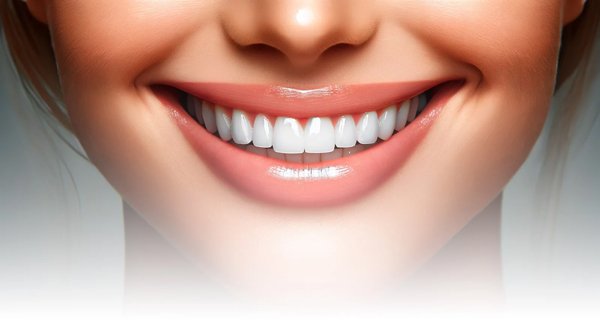Table of Contents
ToggleIntroduction
The purpose of the Introduction section is to provide the reader with an overview of the main topics to be covered in the document and to establish the importance of the topic. It should also include necessary background information about the subject matter. In this section, we will discuss the significance of the topic and why it is important for the reader to understand before delving into the main content of the document.

The main topics to be covered in the Introduction section will include a brief overview of the problem or issue being addressed, the objectives of the document, and the methodology or approach that will be used to address the issue. Background information will also be provided to give the reader a better understanding of the context in which the topic is being discussed.
Enhance Your Smile with Veneers
This information is significant for the reader to understand before delving into the main content of the document because it provides a framework for the rest of the information presented. It sets the stage for what will be discussed in the main body of the document and helps the reader to have a clear understanding of the context and significance of the topic at hand. Without this understanding, the main content may be difficult to comprehend or may lack context.
– Definition of Composite veneers and porcelain veneers
Veneers are thin shells that are placed on the front surface of the teeth to improve their appearance. Composite / Resin veneers are made of a tooth-colored material called composite resin, which is directly applied to the teeth and then shaped to the desired size and shape. Porcelain veneers, on the other hand, are made from a strong, durable ceramic material. The procedure for placing porcelain veneers involves several steps, including initial consultation, teeth preparation, taking impressions, fabrication of the veneers, and bonding.

During the initial consultation, the dentist will assess the patient’s dental needs and discuss the options for veneers. In the teeth preparation phase, a small amount of enamel is removed to make room for the veneers. Impressions are then taken and sent to a dental lab to fabricate the custom veneers. Finally, the veneers are bonded to the teeth using a special adhesive.
The benefits of porcelain veneers include their natural appearance, durability, and resistance to staining. However, they are more expensive and require multiple visits to the dentist. Resin veneers, on the other hand, are cheaper and can be placed in a single appointment, but they are not as durable and may discolor over time. Patients should weigh these factors when deciding on the type of veneer that best suits their needs.
– Importance of dental veneers in cosmetic dentistry treatments
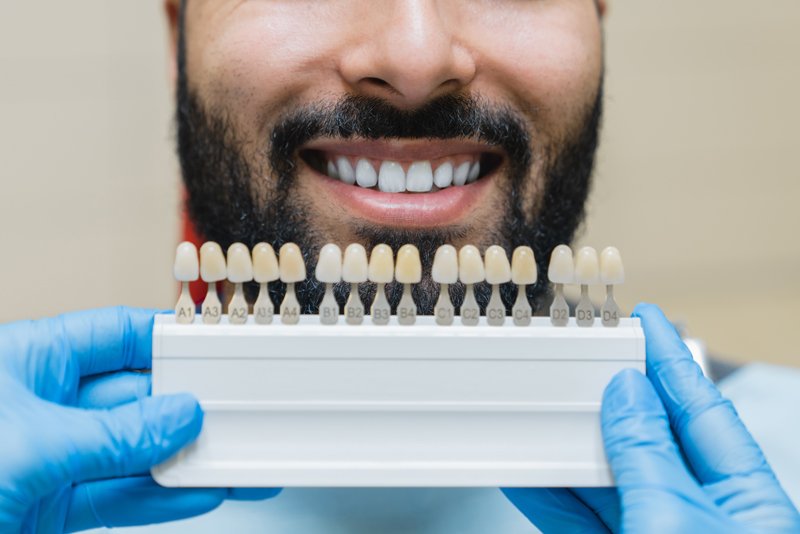
Dental veneers play a crucial role in cosmetic dentistry treatments by correcting aesthetic issues and improving the overall appearance of the teeth. They are thin shells made of porcelain or composite resin that are custom-made to cover the front surface of the teeth. This allows them to address a variety of dental imperfections such as discoloration, chipped or broken teeth, misaligned teeth, and gaps between teeth.
When used to create a “Hollywood smile”, dental veneers can enhance the front teeth, giving them a more uniform, symmetrical, and attractive appearance. This can significantly improve a person’s smile and self-confidence, creating a positive impact on their overall well-being.
Porcelain veneers offer several benefits in cosmetic dentistry. They are durable, with a lifespan of 10-15 years, and provide a natural appearance that closely resembles real teeth. Additionally, porcelain veneers are resistant to stains, making them a long-lasting solution for achieving a beautiful and radiant smile. Overall, dental veneers are an essential tool in cosmetic dentistry for transforming smiles and boosting confidence.
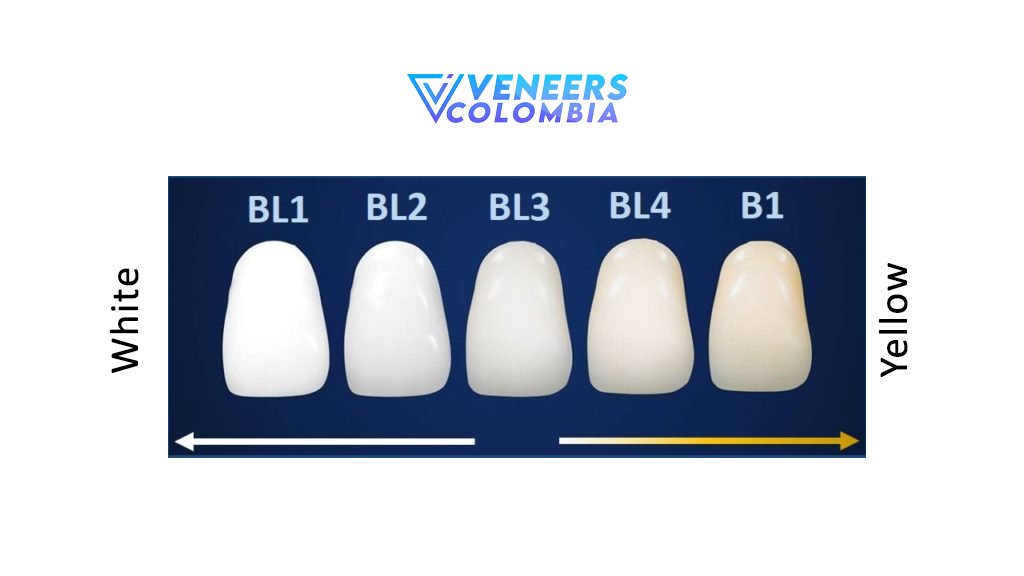
Furthermore, for individuals with crooked teeth, dental veneers, particularly composite resin veneers, offer a quick and effective cosmetic solution. By custom-fitting these thin layers over the teeth, veneers can instantly correct the appearance of misalignment without the need for more invasive orthodontic procedures. This not only enhances the cosmetic appeal of one’s smile but also contributes to improving oral health by making cleaning easier and reducing the risk of decay and gum disease associated with crooked teeth.
– Resin Veneers also know as Composite Veneers
Resin veneers, commonly referred to as composite veneers, are a type of dental veneer made from a tooth-colored resin material. This dental procedure is designed to improve the appearance of teeth by covering the front surface with a specially formulated composite material. Unlike their porcelain counterparts, composite veneers are sculpted on the teeth directly in a dental office, allowing for a more immediate transformation of one’s smile. This method offers a less invasive and often more cost-effective alternative to traditional porcelain veneers. The resin used in composite veneers can be easily shaped and polished to match the surrounding teeth, offering a natural and aesthetically pleasing result. Additionally, the process of applying composite veneers usually requires less removal of the tooth enamel, preserving more of the natural tooth structure. This makes resin veneers a popular choice for those seeking to correct dental imperfections such as chips, gaps, or discoloration without extensive dental work.
Composition and Material
Introduction:
Composition and material are essential elements in the design and construction of various products and structures. The combination of different materials and their arrangement play a significant role in determining the durability, functionality, and aesthetic appeal of an object. Understanding the principles of composition and selecting the appropriate materials are crucial in achieving the desired performance and appearance of a product. In this section, we will explore the importance of composition and material selection in various industries and applications, offering insights into how these factors influence the design and performance of different products.
Resin Veneers

Resin veneers, also known as composite veneers, offer several advantages compared to porcelain veneers. Firstly, they are more cost-effective, making them a more budget-friendly option for those seeking to improve the appearance of their teeth. Additionally, resin veneers or Composite veneers are less invasive, as they require minimal tooth preparation during the application process, preserving more of the natural tooth structure. This also makes them easier to fix if any damage occurs.
One of the key benefits of resin veneers is the possibility of completing the entire process in a single appointment, saving time for the patient. The convenience and cost savings associated with resin veneers make them a popular choice for many patients. Furthermore, the direct sculpting process involved in applying resin veneers allows for precise customization and shaping, resulting in a natural-looking and aesthetically pleasing smile.
Ultimately, the choice between resin veneers and porcelain veneers will depend on the individual’s specific needs and preferences. For those looking for a less invasive, more affordable option that offers the possibility of a single appointment, resin veneers may be the better choice.
– Explanation of composite resin as the primary material for resin veneers

Composite resin is a popular choice for resin veneers due to its versatile composition, translucency, and sculpting capability. This material is a blend of plastic and glass-like particles, providing a natural appearance and the ability to mimic the translucency of natural teeth. Additionally, composite resin can be easily shaped and sculpted to create a custom fit for each individual’s smile, resulting in a seamless and natural-looking result.
One of the main advantages of composite resin veneers is that they are less invasive than porcelain veneers. The application process is typically completed in a single visit, as the material can be directly bonded to the teeth without the need for extensive preparation or multiple appointments. This makes it a convenient option for those seeking to improve their smile without the time commitment of traditional veneers.
In addition to being less invasive, composite resin veneers offer cost-effectiveness, durability, and the ability to preserve natural teeth. They are a more affordable option compared to porcelain veneers and can withstand daily wear and tear. Furthermore, composite resin veneers require minimal alteration to the natural tooth structure, making it a conservative choice for those looking to enhance their smile. Overall, composite resin is a versatile and practical choice for those seeking a natural and long-lasting cosmetic dental solution.
– Benefits of using composite resins in dental treatments
Composite resins have revolutionized the field of dentistry with their versatile and long-lasting benefits. These innovative materials have gained popularity in dental treatments due to their ability to closely mimic the natural color and appearance of teeth, making them a popular choice for restoring damaged or decayed teeth. Not only do composite resins provide a more aesthetically pleasing result, but they also require less removal of healthy tooth structure compared to traditional silver fillings. Additionally, composite resins bond well with the tooth structure, providing added strength and support. They are also a more conservative option, making them ideal for smaller cavities or areas requiring a cosmetic touch-up. With their durability, natural look, and minimal preparation needed, composite resins offer numerous advantages in dental treatments.
Porcelain Veneers
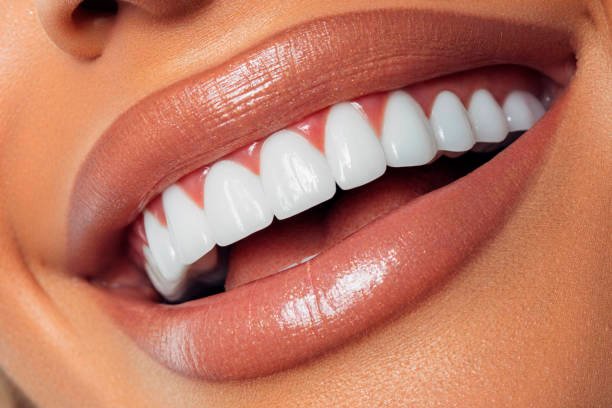
Traditional Porcelain veneers are a popular dental procedure that can dramatically improve the appearance of teeth. The process typically begins with an initial consultation with a dentist, who will assess the patient’s teeth and discuss their goals for the veneers. If the patient is a good candidate for porcelain veneers, the next step is usually to remove a small amount of tooth enamel to make room for the veneers.
After the enamel has been removed, the dentist will take impressions of the teeth, which will be used to create custom veneers that fit perfectly. Once the veneers have been fabricated, they are bonded to the front of the teeth using a special dental adhesive. This bonding process ensures that the veneers are securely attached and will last a long time.
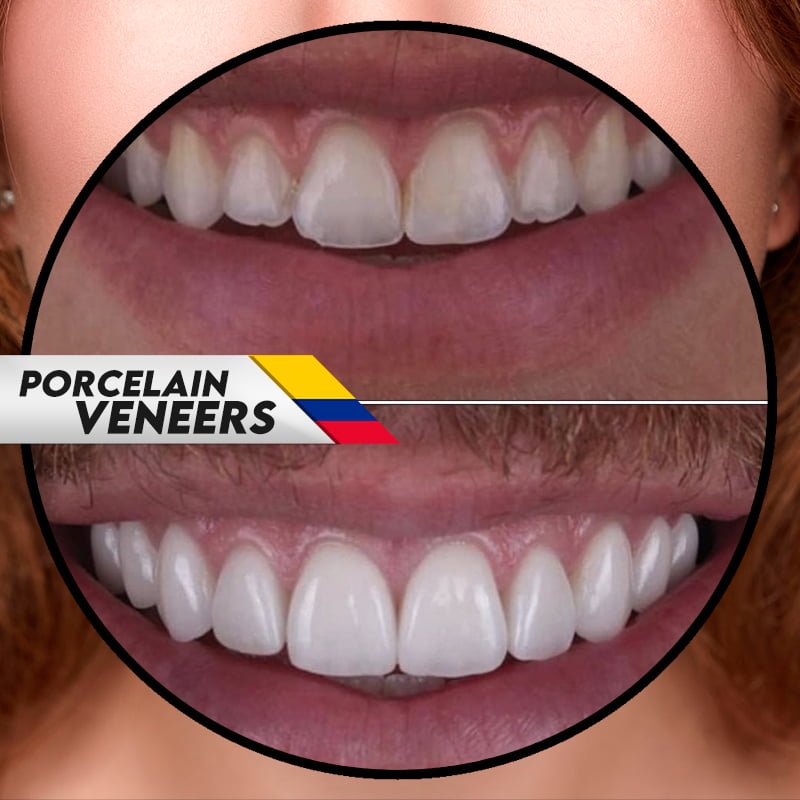
Additionally, for those with crooked teeth, no-prep veneers like Lumineers provide a minimally invasive and permanent solution. These ultra-thin veneers can be applied directly over the existing teeth, offering an immediate correction to the appearance of misalignment without the extensive preparation or alteration of the natural teeth structure required by traditional veneers. This approach not only swiftly enhances the aesthetic of one’s smile but also preserves the integrity of the dental enamel, contributing to long-term oral health.

Traditional Porcelain veneers differ from no-prep veneers in that the latter require little to no enamel removal, making them a more conservative option. However, porcelain veneers are known for their durability and natural appearance, thanks to the high-quality materials used in their production. These materials, including dental porcelain, mimic the light-reflecting properties of natural teeth, resulting in a seamless, natural-looking smile. With proper care, porcelain veneers can last for many years, making them a long-term solution for achieving a radiant smile.
– Overview of porcelain as the main material for porcelain veneers
Porcelain is widely regarded as an ideal material for dental veneers due to its natural tooth-like appearance, translucency, and resilience. Porcelain veneers are custom made to fit over the teeth, providing a natural look and feel. This custom fitting process involves enamel reduction, where a thin layer of enamel is removed from the tooth to ensure the proper fitting of the veneers.
The preparation and placement of T
No-prep veneers, such as Lumineers , are the least invasive permanent option.
raditional porcelain veneers typically involve several steps. First, the teeth are shaped to make room for the veneers. Then, impressions are taken to create custom veneers that perfectly fit over the prepared teeth. Finally, the veneers are attached to the teeth using adhesive glue, providing a long-lasting and durable solution for improving the appearance of teeth.

Overall, porcelain veneers made from high-quality porcelain offer a range of benefits, including a natural appearance, translucency that mimics natural teeth, and resilience that allows for long-term use. These characteristics make porcelain an excellent choice for creating beautiful and durable dental veneers.
– Advantages of using porcelain in cosmetic dentistry procedures
Porcelain is a preferred material for cosmetic dentistry procedures for several reasons. Firstly, porcelain is known for its exceptional durability, making it a long-lasting solution for dental restorations such as veneers, crowns, and bridges. This means that patients can enjoy their restored smile for many years without frequent replacements or repairs.
In addition to its durability, porcelain also offers natural aesthetics that closely resemble the appearance of natural teeth. This makes it an ideal choice for cosmetic procedures as it seamlessly blends in with the rest of the natural teeth, providing a beautiful and seamless smile.

Furthermore, porcelain is highly resistant to staining, unlike other materials such as composite resin. This means that patients can enjoy a bright and white smile without worrying about discoloration over time.
Another advantage of using porcelain in cosmetic dentistry is its ability to address severe dental issues such as extensive damage, discoloration, and misalignment. Porcelain restorations can effectively transform the appearance of the teeth, providing a solution for a wide range of dental problems.
While the cost of porcelain restorations may be considered a potential disadvantage, the longevity and natural appearance that porcelain offers make it a valuable investment in the long run. With its numerous advantages, porcelain remains a popular choice in cosmetic dentistry procedures for those seeking durable, aesthetically pleasing, and long-lasting dental restorations.
Appearance and Aesthetics
When it comes to discussing appearance and aesthetics, one must consider the visual appeal and overall impression of a person, object, or environment. From the way a person presents themselves to the design and decor of a space, aesthetics play a significant role in influencing our perceptions and experiences. Whether it’s fashion, interior design, or natural landscapes, the concept of appearance and aesthetics encompasses a wide range of visual elements that contribute to our sense of beauty and visual harmony. In this context, we will explore different aspects of appearance and aesthetics, from personal style and grooming to artistic expression and visual design.
Resin Veneers
Composite resin veneers offer many benefits compared to porcelain veneers. They are more cost-effective, durable, and convenient for patients. The cost savings of resin veneers make them a popular choice for many individuals, and their durability ensures a long-lasting solution for improving the appearance of teeth. Additionally, resin veneers can be applied in a single appointment, making them a convenient option for patients with busy schedules.
The process of applying composite resin veneers involves bonding the resin directly to the tooth, requiring minimal to no tooth enamel removal. This less invasive nature of the treatment is appealing to many patients.
Composite resin veneers are also ideal for situations where the dentist needs to sculpt the veneer directly on the tooth to cover a crack or chip. This allows for a customized and precise fit, resulting in a natural-looking smile.
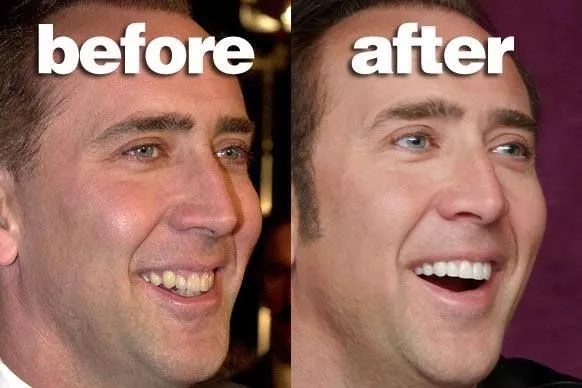
In summary, composite resin veneers offer cost savings, durability, and convenience compared to porcelain veneers. They are a great option for patients looking for a less invasive procedure, as well as for situations requiring direct sculpting on the tooth.
– Description of the translucent quality and natural-looking appearance offered by resin veneers
Resin veneers offer a translucent quality and natural-looking appearance that effectively restore a patient’s smile in just one day. These veneers are made of a thin layer of tooth-colored resin that mimics the natural translucency of teeth, creating a seamless and realistic appearance. The translucent quality of the veneers allows light to pass through them, just like natural teeth, providing a natural and aesthetically pleasing smile.
Moreover, resin veneers are more porous compared to other types of veneers, making them more prone to staining. Therefore, it is important for patients to avoid consuming food and drinks that can stain teeth, such as coffee, tea, and red wine. By maintaining good oral hygiene and avoiding stain-causing substances, patients can prolong the lifespan and natural beauty of their resin veneers.
In conclusion, resin veneers offer a translucent quality and natural-looking appearance that can effectively restore a patient’s smile in a single day. However, it is crucial for patients to be mindful of their consumption and maintain proper dental hygiene to preserve the beauty of their veneers.

– How resin veneers can enhance a beautiful smile
Resin veneers are a popular cosmetic dental option that can greatly enhance the beauty of one’s smile. These thin layers of composite material are custom-made and bonded to the front surface of the teeth, effectively improving their size, shape, color, and overall appearance. With resin veneers, individuals can achieve a natural-looking, radiant smile that complements their facial features and boosts their confidence. Whether addressing tooth discoloration, minor misalignments, or chipped teeth, resin veneers offer a versatile, long-lasting solution to creating a stunning smile.
Porcelain Veneers
Obtaining porcelain veneers involves several steps. First, a dental consultation is necessary to discuss the desired outcome and the condition of the teeth. After the initial consultation, the teeth are prepared by removing a small amount of enamel to make room for the veneers. Then, impressions of the teeth are taken to create custom-made porcelain veneers. During the installation process, the veneers are bonded to the teeth, creating a natural-looking appearance.
Porcelain veneers are made of a strong and durable ceramic material, which provides a more natural look compared to polymer-based ceramic materials. Porcelain veneers are translucent, giving them a similar appearance to natural teeth, while polymer-based ceramic materials may not provide the same level of translucency.
To maintain porcelain veneers, regular dental hygiene is essential, including brushing and flossing. Avoiding biting hard objects and regular dental check-ups are necessary to ensure the longevity of the veneers. Overall, porcelain veneers offer a natural-looking and long-lasting solution for enhancing the appearance of the teeth.

